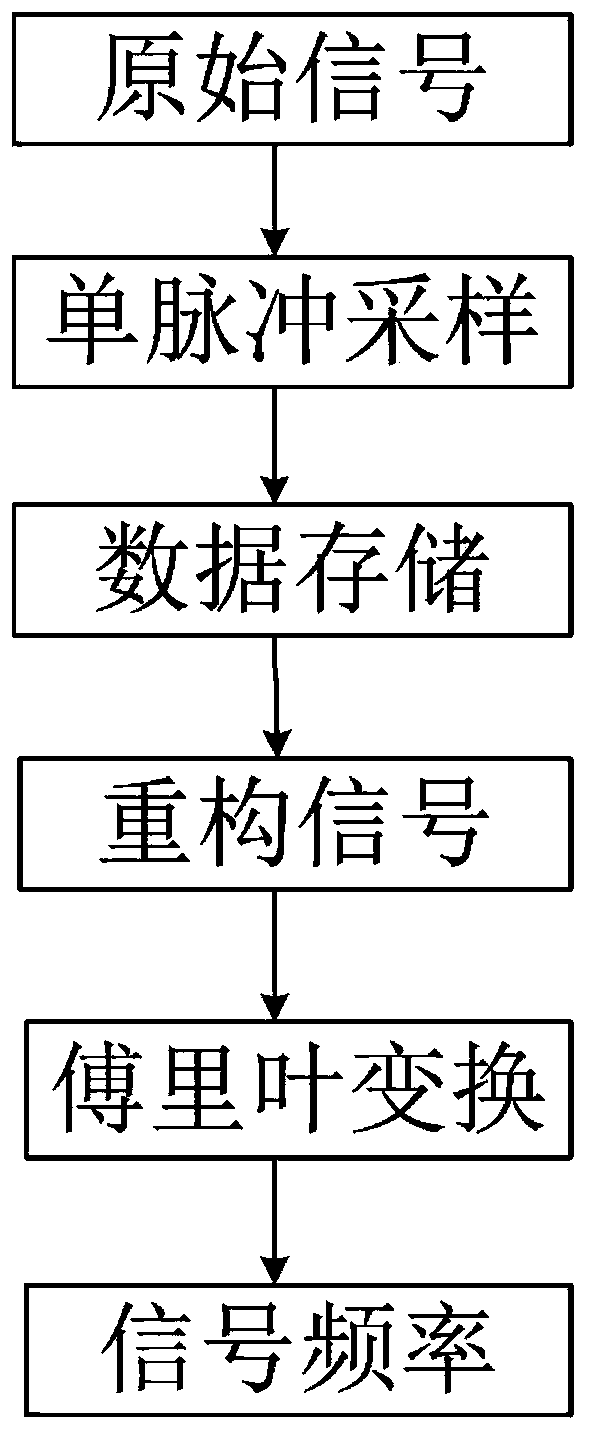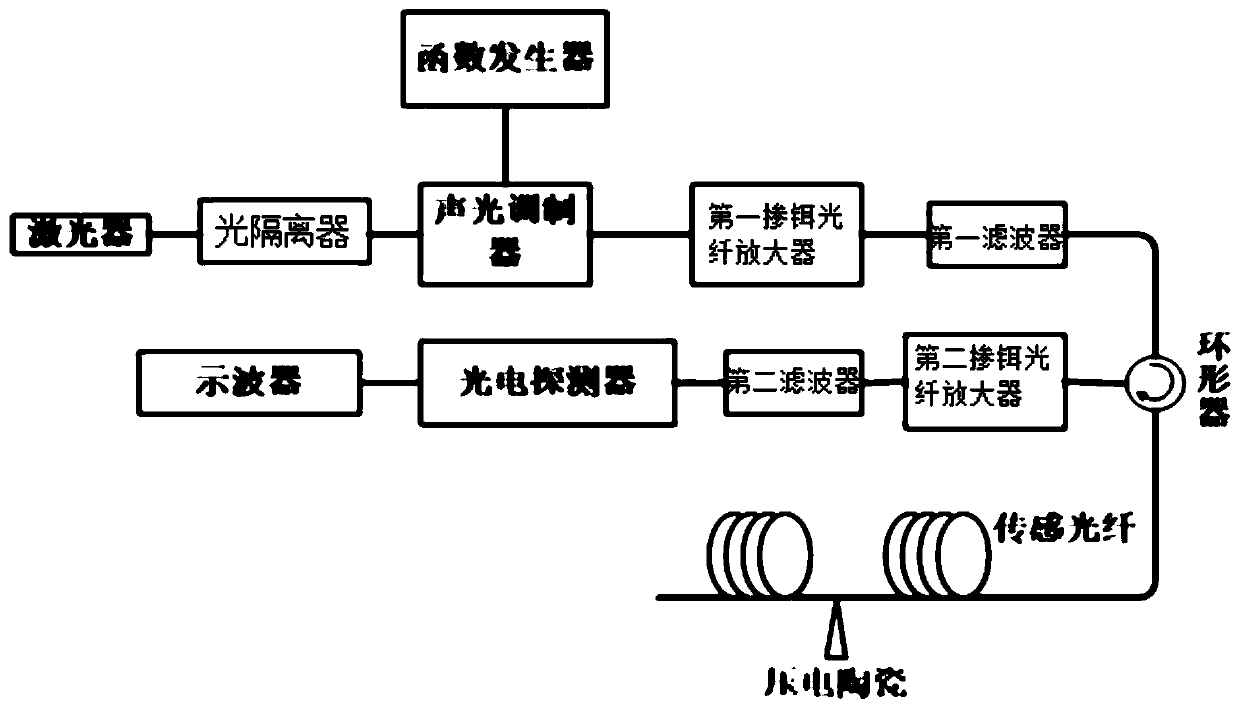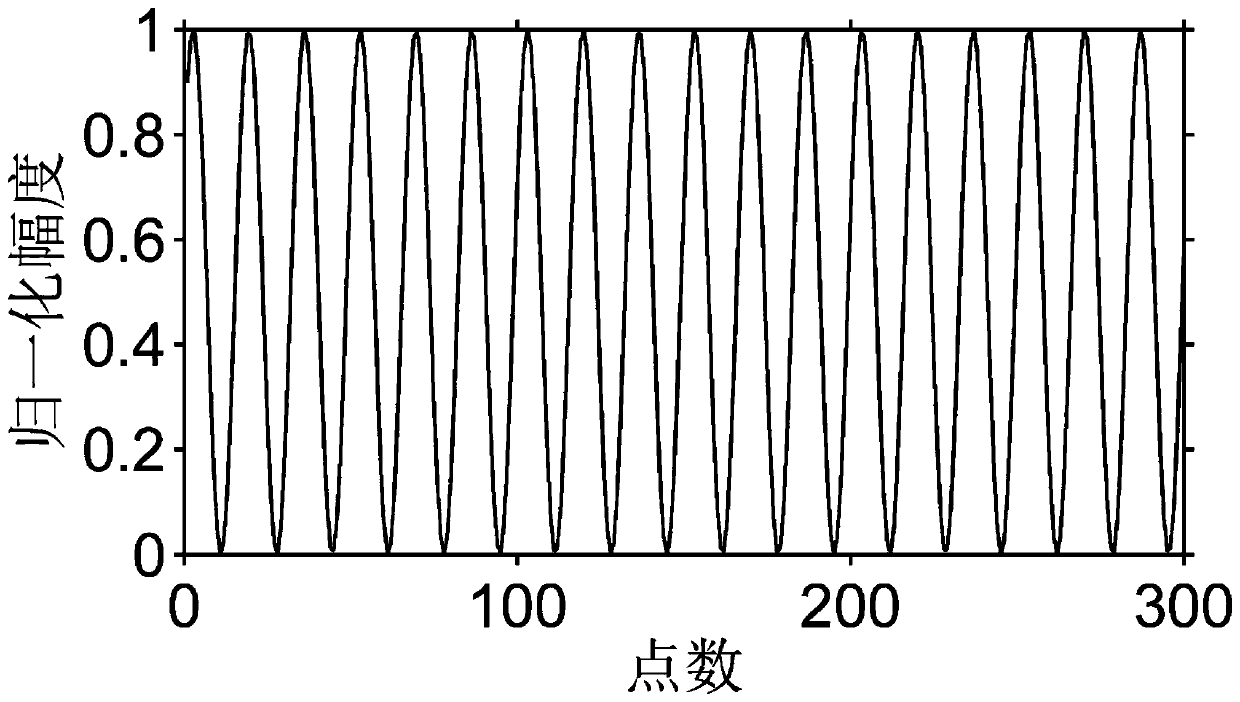Method for recovering signals and frequencies in phase-sensitive OTDR sensing by random single pulse sampling
A phase-sensitive, signal-recovery technology, applied in transmission systems, electromagnetic wave transmission systems, electrical components, etc., can solve problems such as improvement and long signal processing process
- Summary
- Abstract
- Description
- Claims
- Application Information
AI Technical Summary
Problems solved by technology
Method used
Image
Examples
Embodiment 1
[0059] A method of random single-pulse sampling to recover signal and frequency in phase-sensitive OTDR sensing, such as figure 1 As shown, it is used for signal reconstruction and frequency recovery in phase-sensitive OTDR, including the following steps:
[0060] (1) Determine the observation matrix Φ corresponding to the sinusoidal signal required for the experiment;
[0061] (2) Determine the observation vector y corresponding to the observation matrix Φ;
[0062] (3) Utilize the discrete Fourier transform matrix to obtain the sparse matrix Ψ of the signal;
[0063] (4) Use the orthogonal matching pursuit algorithm OMP to perform signal reconstruction and frequency recovery;
[0064] (5) Transform the signal from the time domain to the frequency domain through Fourier transform, and then obtain the signal and frequency.
[0065] The phase-sensitive OTDR device used in the present invention is as figure 2 As shown, the phase-sensitive OTDR device includes a laser, an op...
Embodiment 2
[0068] According to a kind of random monopulse sampling described in embodiment 1, the method for recovering signal and frequency in phase-sensitive OTDR sensing, its difference is:
[0069] Step (1), determine the observation matrix Φ corresponding to the sinusoidal signal required in the experiment, including the following steps:
[0070] A, simulate the analog signal of any frequency by Matlab software, set the length of the analog signal to be N, the length of the analog signal is the same as the length of the disturbance signal in the experiment;
[0071] B. Use a random monopulse sequence to perform analog sampling on the analog signal, that is, randomly collect points at non-equal intervals on the analog signal simulated in step A; this process of non-equally spaced random sampling is called a random monopulse sampling process. The stochastic monopulse process involves sampling a signal by using a generated random monopulse sequence.
[0072] C. Known according to A in...
PUM
 Login to View More
Login to View More Abstract
Description
Claims
Application Information
 Login to View More
Login to View More - R&D
- Intellectual Property
- Life Sciences
- Materials
- Tech Scout
- Unparalleled Data Quality
- Higher Quality Content
- 60% Fewer Hallucinations
Browse by: Latest US Patents, China's latest patents, Technical Efficacy Thesaurus, Application Domain, Technology Topic, Popular Technical Reports.
© 2025 PatSnap. All rights reserved.Legal|Privacy policy|Modern Slavery Act Transparency Statement|Sitemap|About US| Contact US: help@patsnap.com



